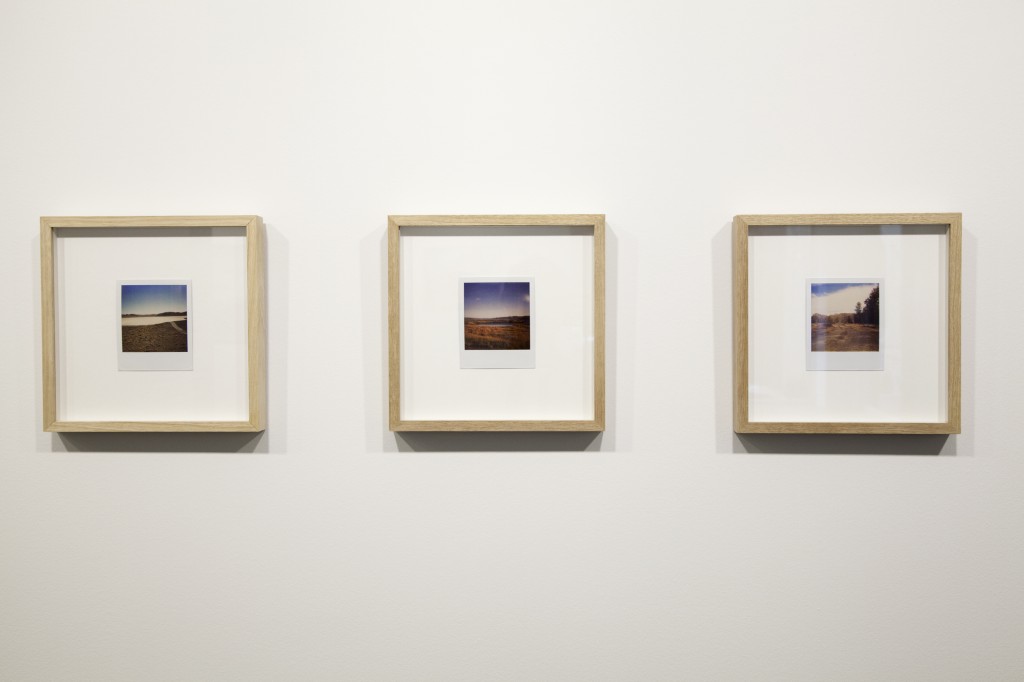One source I refer to when I think about photography is Christopher Nolan's 2000 movie Memento. Translated into Turkish as "Akıl Defteri" the movie is about memory. As the Polaroids and the notes the main character takes on them cannot substitute for his short-term memory, the tattoos on his body with dates and names create an alternative universe which is a record of "important" information. The memoirs and situations constantly revised are two things that make this movie which I haven't figured out completely even though I saw it a couple of times and despite my efforts to solve it through forums in Google, haunt my mind to this day.
I guess, the reason I started taking interest in Seza's works could either be Nolan or the fact that I cannot keep away from Polaroids. What make Polaroids appealing is their faculty to document and transform the moment and circumstance one experiences immediately into an object. Its square format, the almost perfect texture of the paper, the black space behind the paper indicating the image at the front and its being a picture within a picture, make Polaroids the most fetishized photography. What I find alluring was the banality as a result of this mergence of this fetish and the landscape fetish. Although I saw the Polaroids 3 months ago, I am still thinking about them. The simplicity of road stories, especially the amazing romantic memories of 10-15 days of car travel of youth, which are an important part of the American geography, seem quite genuine to me. The awe of looking at the horizon, the instincts of loneliness and recording, are what give prominence to simplicity, the feeling of being anybody in Seza's works. The way he differentiates, individualizes what everybody sees and experiences, recording via a medium used by everybody but emphasizing the relationship between those that are recorded, opens a door for the viewer.

Landscapes are sequences of time and place; they refer to some kind of vulnerability. They document some approach with regards to the context in which the image is produced and the artist. In his photography series "New Landscapes" exhibited in Elipsis under "Editions" couple of years ago, Seza achieved confusing yet "neat" photographs by extending the panoramic image. Through symmetry and the instinct to perfection, Seza sterilized and "arranged" romantic landscape photography by assigning his photographs a clinic dimension. In his last exhibition, on the contrary, he focuses on a single photograph, a single landscape, and it seems he approaches the landscape in a more simplistic way. "New Landscapes" is an explicit gesture suspending the representational nature of photography, his new works relate to this issue of representation in photography in a more indirect way. These landscapes creating a coherent "view" of the world by merging extremely different places, seasons and experiences, actually do not concentrate on the issue of representation. Rather, Seza questions the concept of landscape photography in his effort to blend the topologies and descriptive images of the places he has been to with still life images consisting of objects and plants. The artist's new works formed in an "incomplete" and "unexpected" way, are a result of self-criticism as well as a gesture specific to technique; Seza experiments on how far he can carry this conception of landscape using his personal experiences in different places.
A week before the end of Seza's exhibition, what I was pondering on was how this act of carrying forward is to be materialized. What makes me question the medium of photography rather than hanging a landscape photograph on my wall, to look at it or desire to be somewhere else. What kind of potential does a single photograph have today? More precisely, what demarcates the limitations of photography? Is it only possible to rake some specific issues up via propositions of multiple photographs, series and projects? Is it possible to distinguish all that is written about some photography exhibition, all those photographs that are parts of an anthology of that specific moment and circumstance? What does it mean to bring photography's uneven relation to a specific moment? Is it possible for a photography exhibition to exist and endure in time?

With all those questions buzzing my mind, I'd like to finish this essay with Memento. When Teddy wants to tear one of the photographs, Leonard - the main character - says he cannot do that, he should burn the Polaroid instead. This can be interpreted as due to Polaroid's plastic-like surface as an object, it cannot be torn easily. What I think with regards to this, was the relation between what is uttered and recollections, documents and memories. What does it mean to get rid of a photograph only by burning it? Is it possible to transform someone's memories into Polaroids? Does the fact that one cannot get rid of a memory unless one burns it, mean one can escape from the significance of the moment only when the "document" of that moment is lost, rather than not being able to tear Polaroids? Whether the only way to get rid of photographs is to exhibit them?
